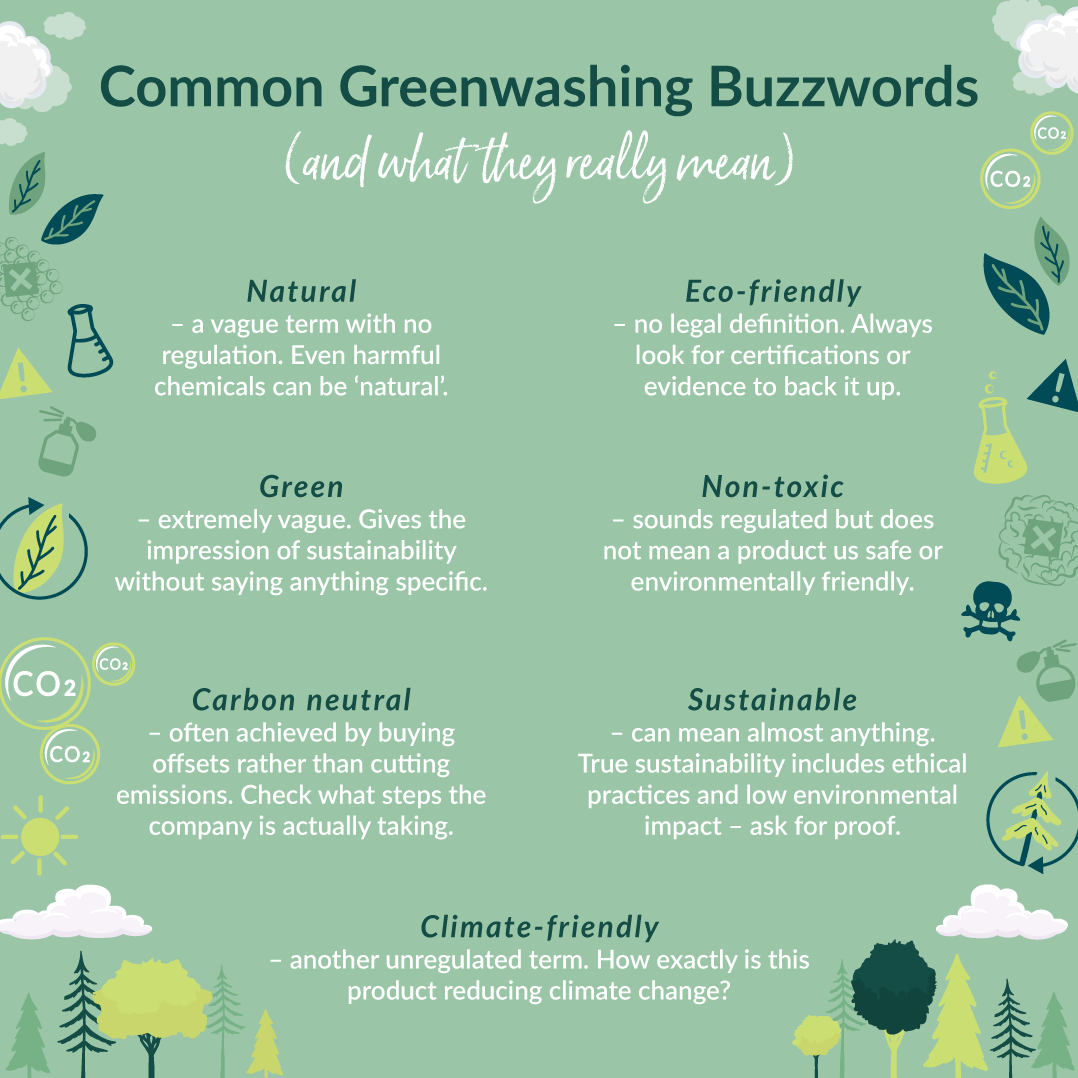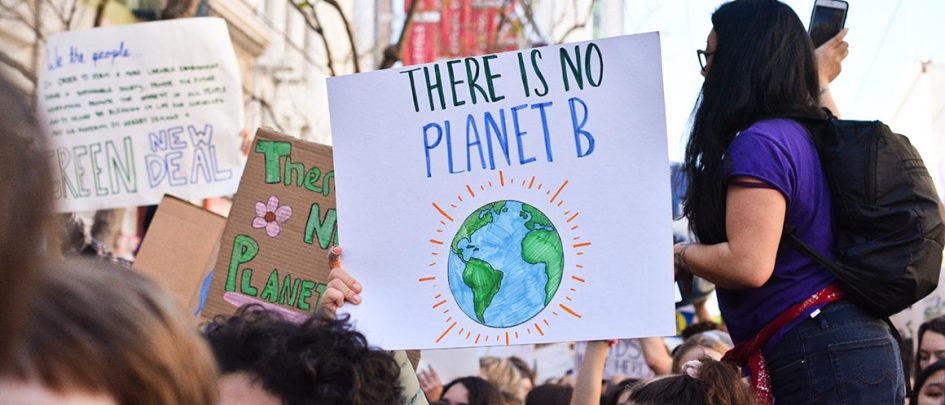Trying to shop more sustainably can be overwhelming. Just when you think you’ve found an eco-conscious brand, it turns out they’re not as green as they seem. That’s because some brands now engage in greenwashing – misleading consumers with false or exaggerated environmental claims. Consumers are increasingly motivated by shopping more ethically and sustainably, and companies are keen to cash in.
This guide will help you understand what greenwashing looks like, why it matters, and how to spot it so you can make confident, informed choices.
What is Greenwashing?
Greenwashing is when brands present themselves as being more environmentally responsible than they are. It is used to mislead consumers without actually making meaningful, sustainable changes. The term was coined in 1986 by environmentalist Jay Westervelt, and the problem has only grown since.
It’s a marketing tactic designed to win over eco-conscious consumers without a company putting in the real work to reduce its environmental impact. Greenwashing can look like vague environmental claims, earthy, green, and eco-looking packaging, or marketing campaigns that spotlight small “green” gestures whilst ignoring larger environmental impacts.
Common Signs of Greenwashing
-
Buzzwords without evidence
Terms like “eco-friendly”, “all-natural”, or “made with recycled materials” can sound impressive, but they often lack substance. Are the materials certified? Is there a breakdown of what’s actually used? Look for specific, verifiable claims.

For example, “plant-based” simply means that something is made from plants. But that doesn’t guarantee sustainability. Plant-based plastic can still contain petroleum-based content, making them non-recyclable and non-compostable. Always look how claims are validated and explained. For example, Natracare’s Pads and Panty Liners have a bioplastic backing sheet derived from agricultural waste from non-GMO corn. These are certified compostable by the Seedling Mark – demonstrating a verified and sustainable solution.
-
No Proof or Transparency
If a brand claims to be sustainable but doesn’t provide data, certifications, or detailed explanations to back it up, that’s a red flag. Real sustainability requires openness and accountability. Good companies validate their claims with trusted third-party certifications to proove their products are as green as they say.
-
Sudden Sustainability Shifts
If a brand with no track record of environmental concern suddenly jumps on the sustainability bandwagon and markets themselves as a green business, it is valid to question their intent. Is this a genuine shift, or a marketing tactic to pull the wool over eco-conscious consumers eyes?
Consistency in environmental action demonstrates integrity – and suggests the brand is less likely to be greenwashing.
-
Surface Level Changes
Does the business model itself support sustainability? Swapping to compostable packaging while continuing mass over production or underpaying workers, doesn’t make a brand ethical or green. One example is when the fast fashion giant H&M launched a collection using Circulose, a material made from upcycled clothes. This seemed like a positive step in towards more sustainable fashion, but fast fashion as a business model is inherently unsustainable. Mass production and planned obsolescence can’t be fixed with small material changes.
Brands might highlight these moves to distract from their broader environmental impact, so it is something to look out for.
-
If it Sounds Too Good to Be True…
It probably is. Super low prices and sweeping sustainability claims often don’t align. Are fair wages being paid? Are materials sourced responsibly? Unrealistic promises can signal greenwashing. Brands can also carefully use language to give an impression of a product or service being more sustainable than it actually is.
How to Become a More Informed Shopper
Ask Questions
Reach out to brands about their claims. Genuine companies will welcome transparency.
Look for Certifications
Check for recognised third party certifications like B Corp, Soil Association, or GOTS.
Check the Big Picture
Consider the brands overall impact, not just the product in front of you.
Follow Activists and Watchdogs
Social media is a great way to get a feel for whether a brand’s latest “eco” announcement is just greenwashing. By following activists and listening to real-time critiques of corporate sustainability claims, you’ll gain tips of what brands to avoid and learn what signs to look out for in other brands.
Companies, brands, and products will have a huge impact in the coming decades in how to prevent and reverse the damaging effects of climate change. As consumers, we can demand better. By asking questions, staying curious and supporting brands with genuine commitments to sustainability, we can drive change.
Want to learn more about real sustainability in action? Read about how Natracare became a certified B Corp – and why it matters.












